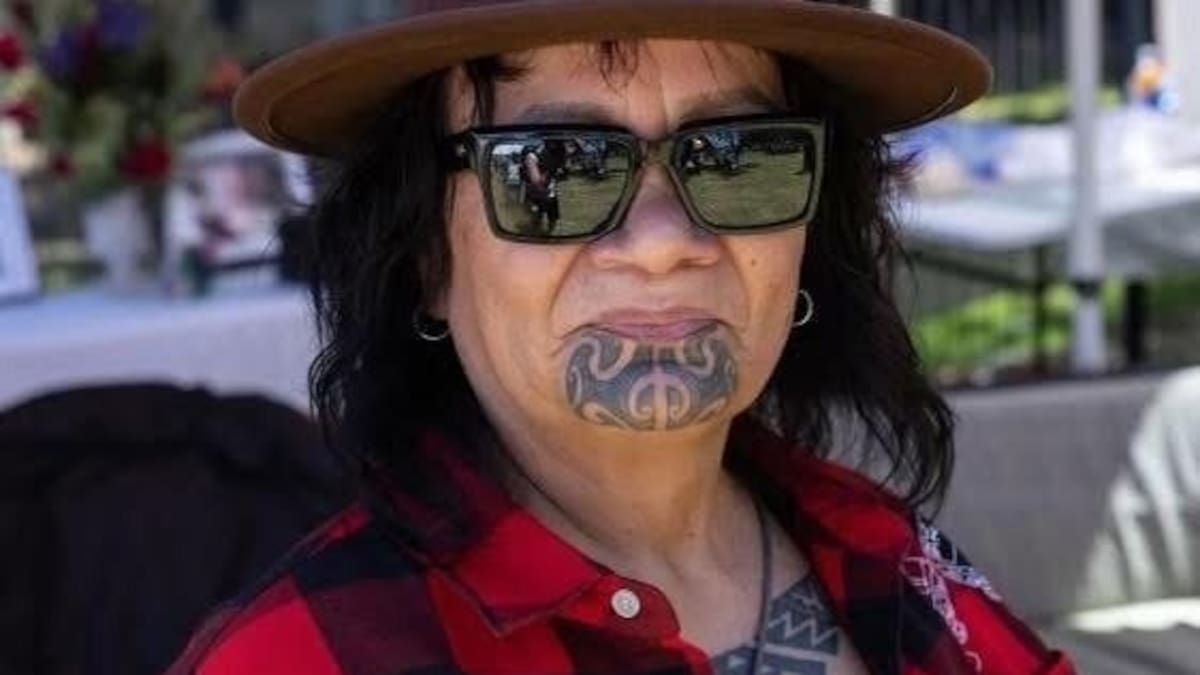There are events across the Bay of Plenty to celebrate.
The movement promotes daily use of te reo. One in 25 people in Aotearoa speak te reo Māori, with data projecting one million Māori speakers by 2040.
Munn, from Tauranga, provided a whakataukī (proverb) to usher in the 50th anniversary.
“Ko te reo te rākau i hinga ai te kūpapa.” Translated: The language is the weapon that fells the collaborator.
“Reo is resistance, full stop,” Munn said.
The theme of Te Wiki o Te Reo Māori, “ake ake ake”, translates to “a forever language”.
Munn said: “Language is the cord to our tīpuna. You cut the cord, you cut us off. Reo holds our mātauranga (knowledge), our humour, our karakia (prayer), our rage, our love. It’s not just words. It’s how we think, how we mourn, how we fight. You lose the reo, you lose the map home.”
Fifty years of Te Wiki o Te Reo Māori have been “huge and hilarious”.
“You used to get side-eye just for saying ‘kia ora’ at the dairy. Now, half the country’s singing waiata at work. That’s a win.”
Te Wiki o Te Reo Māori has “opened the floodgates”.
But one week a year “doesn’t cut it”, said Munn.
“It’s daily, it’s lifelong, it’s revolutionary. Te Wiki lit the fire, but we’ve got to keep feeding it.”
Te Wiki o Te Reo Māori started Māori Language Day in 1972 and became Māori Language Week in 1975.
The sole living designer of the Tino Rangatiratanga flag, Linda Munn from Pāpāmoa. Photo / Kelly Makiha
For Munn, the Māori language exists beyond words, influencing her work as an artist.
“Reo let us name our world on our own terms – that’s sovereignty.”
When asked about the relationship between the Māori language and symbols, Munn said the Tino Rangatiratanga flag itself was a kōrero (talk or discussion).
The whakapapa (genealogy) of Māori is stitched into the flag.
The koru featured in the flag’s design is te ira Māori – “life essence spiralling out from the whenua”.
“Every line, every shape, carries kupu (vocabulary) without needing to say a word. The black, red, white – they’re not just colours, they’re our creation stories: Te Kore, Te Pō, Te Ao Mārama.”
Te Kore, Te Pō, and Te Ao Mārama tell the story of Māori creation.
Te Kore is the nothingness, the void, from which Te Pō (the darkness) originated and became Te Ao Mārama, the light.
Munn said the flag spoke Māori. Her language gave the design a heartbeat.
“Symbols without reo are just decorations. Symbols with reo are declarations.”
David Taui, owner of Damel Traffic Management, took to the roads earlier this year with te reo Māori stop-go signs to bring the language “front and centre”.
The stop/go roadworks sign in te reo Māori on Matapiro Rd, Hawke’s Bay. Photo / Jack Riddell
“We were teaching the language, not just to the overseas travellers, but our own iwi travellers. It’s important for the language to survive if it’s seen more.”
The incorporation of colours and symbols helped get the message across. “taihoa” translates to wait, and “haere” means go. These words, accompanied by the associated colours and symbols, ensured everybody could understand.
“The everyday use of te reo Māori is beneficial to all our kids, the future of Māori and all of New Zealand.”
Pāpāmoa-based land artist Kenrick Smith, who painted the Te Wiki logo into Mt Maunganui Beach for 2024’s celebration, said: “Language is incredible for breaking down barriers”.
The phrase “kia kaha” (stay strong) means a lot to Smith.
“The word has a lot of mana (power) attached.”
You can find more information on Te Wiki o Te Reo Māori here: Te Rangaihi Reo Māori | Māori Language Movement

